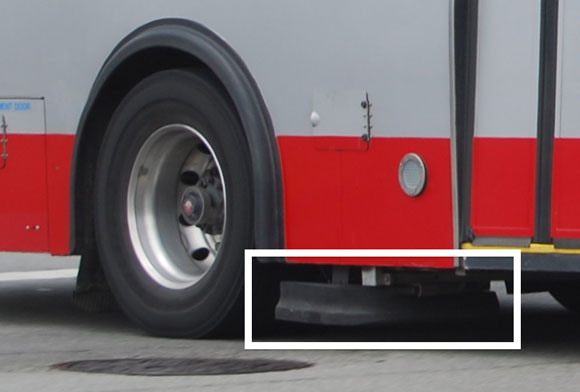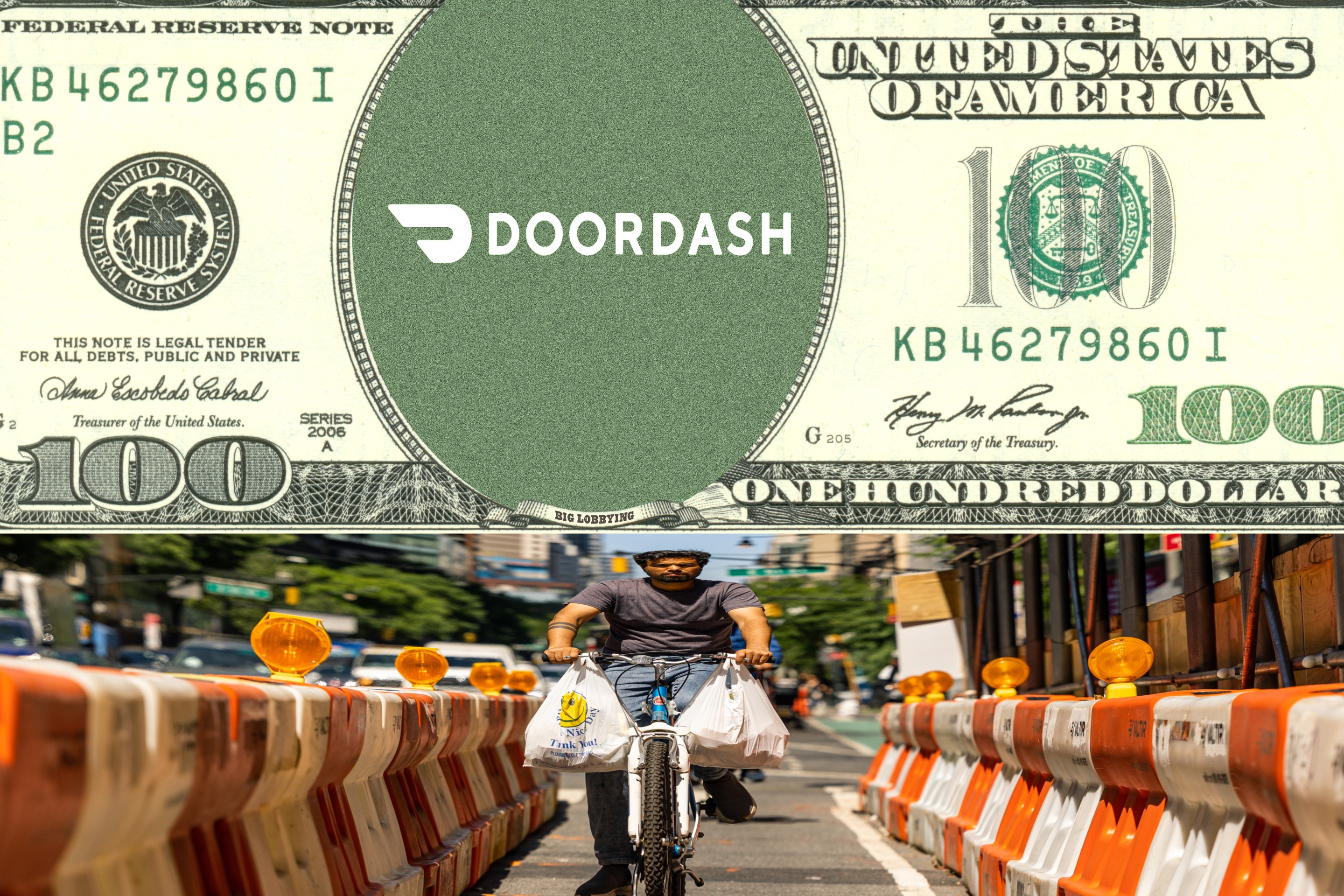
Council Member Antonio Reynoso has introduced a resolution calling on the MTA to install rear wheel side guards, which keep pedestrians and cyclists from being crushed beneath the wheels of a bus. The equipment is already used on buses in cities across the country, but the MTA says it's not interested in installing sideguards on its vehicles.
At least three of the eight pedestrians killed by MTA bus drivers last year were run over by the rear wheel of the bus, according to the City Council resolution. They include two deaths at intersections in Reynoso's district: Marisol Martinez, 21, killed last March at Union Avenue and Meeker Street in Williamsburg, and Edgar Torres, 40, killed in October at Palmetto Street and Wyckoff Avenue in Bushwick. According to witnesses, both were in the crosswalk with the signal when a turning bus driver struck them. They were knocked down before being run over by the rear wheel.
Rear wheel side guards are hard plastic appendages designed to bridge part of the gap between the bottom of a bus and the ground, deflecting a fallen pedestrian or cyclist to avoid impact with the wheel. Public Transportation Safety International manufactures the S-1 Gard, which has been installed on buses in Los Angeles, Chicago, San Francisco, Washington, D.C., and Baltimore, among other cities. The product is also being added to buses in Sweden and Nigeria.
Before Washington's Metrobus installed wheel guards, about two people per year died after being struck by the right rear tire of vehicles in its fleet. After the equipment was installed, the agency went several years with no fatalities, according to a 2007 letter from safety staff posted to the S-1 Gard manufacturer's website.
Los Angeles County Metro told Streetsblog that it took two years to outfit its entire fleet with rear wheel guards, starting in 2003, and they were standard on new bus purchases for several years. The agency decided to drop the guards from its new vehicles in 2012 but is keeping them on its remaining 1,500 to 1,600 buses until the vehicles are phased out. LA Metro did not explain why it decided not to include the guards on new buses.
A 2008 report [PDF] from a research initiative of the Federal Transit Administration, the Transportation Research Board, and the American Public Transportation Association highlighted the S-1 Gard as a tool to reduce the severity of rear-wheel crashes but noted that "further research is needed to determine its effectiveness."
MTA spokesperson Adam Lisberg said the authority identified a couple of crashes involving MTA buses where a rear wheel side guard might have made a difference in preventing death or reducing the severity of an injury, but the MTA has refused to test the product on its fleet. Lisberg said the agency has raised a variety of objections, including the potential to interfere with bus maintenance, get snagged on curbs during turns, pop out and injure pedestrians, or damage the bus on uneven road surfaces.
Public Transportation Safety International disputes these claims and points to the S-1 Gard's warranty and deployment in other major cities as proof of its success. The Maryland Transit Administration, for example, told Streetsblog that it has not had any maintenance issues since installing the side guards.
The MTA remains unconvinced. "We have a situation where, in the abstract, it sounds like a great idea," said Lisberg. "But we don't just put something on a 5,600-bus fleet unless they've addressed all our concerns and we've seen that it will address a problem."
Lisberg said a demonstration of the S-1 Gard in Albany in 2002 with a test dummy proved the product was "not suited for mass transit applications." A video of the Albany test on Public Transportation Safety International's website shows the dummy being deflected before the wheel runs over it. "The test went well," said Mark Barron, the company's founder and CEO.
Barron has offered free installations of the S-1 Gard, which typically costs $1,100 to $1,300 per bus, to the MTA on a trial basis. He recommended starting with MTA coach buses and older-model city buses that have the biggest gap between the bus floor and the roadbed, but says the agency has refused.
“They've been fighting them from the beginning. Their attitude is that they don’t need it," Barron said. Opposition at the MTA comes not from upper management but from staff in charge of bus maintenance, he said.
Instead of testing side guards, the MTA has lately been interested in adding audible warnings to tell people walking and bicycling that a bus is turning. It has also produced victim-blaming public education videos aimed at pedestrians and cyclists.
This isn't the first time the MTA's refusal to test side guards has gotten attention. In 2006, Fox 5's Arnold Diaz produced a "Shame, Shame, Shame" segment targeting the MTA after at least four pedestrians were crushed beneath the rear wheels of its buses that year. A video of the news report is available on the S-1 Gard manufacturer's website.
Reynoso has been advocating for rear wheel side guards at the MTA since at least last October, when he mentioned the issue at a City Council hearing. The renewed push comes as the city's Vision Zero initiative focuses on improving safety among large fleets. Alex Epstein of U.S. DOT's Volpe Center authored a recent report outlining a plan to install truck side guards on city-owned vehicles. “After trucks," he said, "buses are the next professional driver fleet where you can do something to make it safer.”





